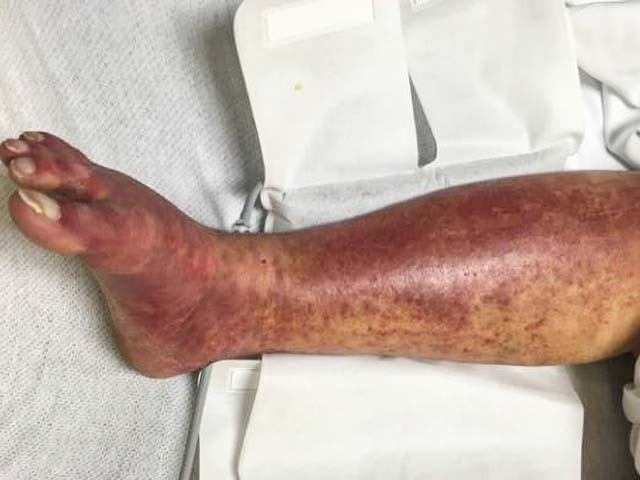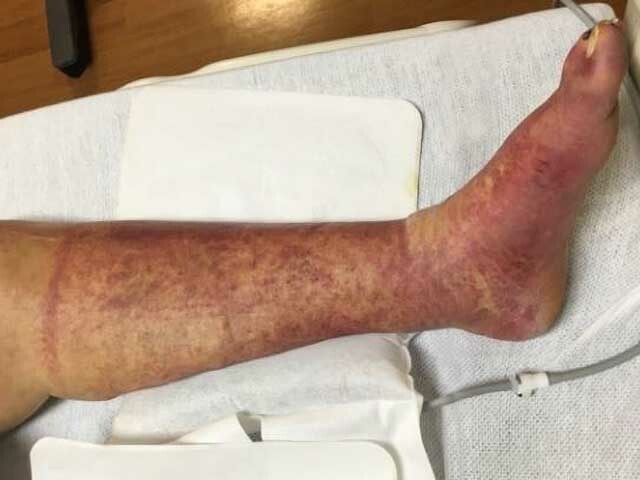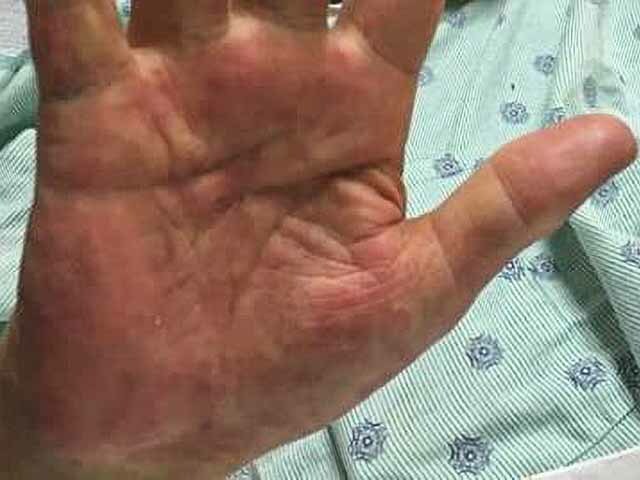Main menu
Common skin conditions

NEWS
Join DermNet PRO
Read more
Quick links
Author: Kevin Zheng, Medical Student, University of Auckland. Chief Editor: Hon A/Prof Amanda Oakley, Dermatologist, Hamilton, New Zealand, October 2015. DermNet Revision October 2021
Introduction Causes Demographics Clinical features Complications Diagnosis Treatment Outcome
Papular purpuric gloves and socks syndrome is a distinctive viral rash characterised by painful redness and swelling of the feet and hands.
Papular purpuric gloves and socks syndrome (PPGSS) is usually caused by an erythrovirus called Parvovirus B19 (EVB19). This is a single-stranded DNA virus that targets red cells in the bone marrow. It spreads via respiratory droplets and has an incubation period of 7–10 days.
The syndrome has been noted to have a seasonal variation, often occurring during spring and summer. Papular purpuric gloves and socks syndrome has also been associated with:
Papular purpuric gloves and socks syndrome typically occurs in young adults; sometimes older adults and children.
The prodromal phase of Parvovirus B19 infection causes nonspecific viral symptoms such as mild fever, headache, and arthralgia.
Papular purpuric gloves and socks syndrome is rapidly progressive, presenting as symmetrical, painful, erythema and oedema of the feet and hands.
Enlarged lymph nodes are common. Neurological symptoms may also occur.

Papular purpuric gloves and socks syndrome: EBV

Papular purpuric gloves and socks syndrome: EBV

Papular purpuric gloves and socks syndrome: EBV
Images from: Rosales Santillan M, Dietert JB, Jahan-Tigh R. Adult-onset papular purpuric gloves and socks syndrome. Dermatol Online J. 2018;24(4):13030/qt02x2h6sd.
Parvovirus B19 infection can result in complications including:
Papular purpuric gloves and socks syndrome is a clinical diagnosis based on its characteristic features of a sharp cut-off at the wrists and ankles and rapidly progressive course. The viral cause can be confirmed on investigations. [see Laboratory tests for viral infections]
If the patient is unwell, a full blood count should be performed. Routine laboratory blood tests are usually normal. Some patients may have lymphopenia, neutropenia, or thrombocytopenia.
A skin biopsy is not usually indicated for the diagnosis of papular purpuric gloves and socks syndrome, as histopathologic findings are nonspecific.
Ultrasound examination and Doppler examination of at-risk pregnancies can detect hydrops fetalis.
Treatment of papular purpuric gloves and socks syndrome is generally symptomatic. Affected children/adults may remain at school/work if they feel well enough, as the infectious stage of viraemia occurs before the rash is evident.
Resolution of the rash usually occurs within one to three weeks without scarring.